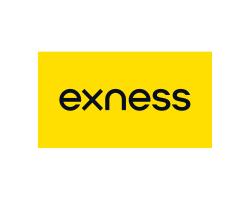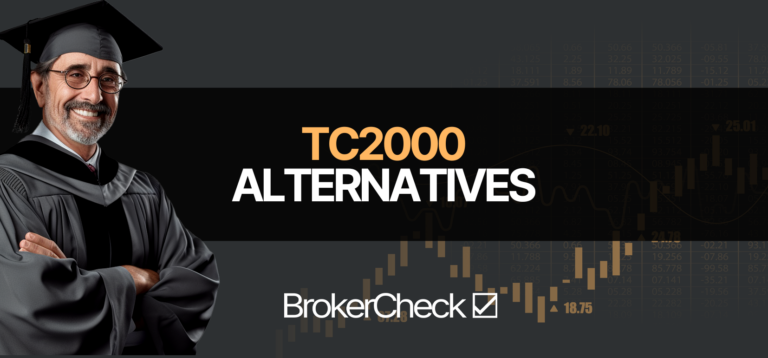1. Overview of Fractional Reserve Lending
1.1 Define Fractional Reserve Lending
Fractional reserve lending is a banking system in which only a fraction of bank deposits are required to be kept in reserve, with the rest made available for lending. This system allows financial institutions to create loans far exceeding their actual reserves, multiplying the impact of each deposit within the economy. In traditional banking, the reserves serve as a safeguard to ensure that banks can meet withdrawal demands from depositors, even as the majority of funds are lent out to generate interest and stimulate economic activity.
1.2 Explain the Concept in the Context of Cryptocurrencies
In the cryptocurrency space, fractional reserve lending is an emerging concept. Similar to traditional banks, crypto lending platforms hold a portion of deposits in reserve while lending out the rest to generate returns. This is typically facilitated through decentralized finance (DeFi) platforms, where crypto holders can deposit their assets as collateral and, in turn, receive loans in stablecoins or other cryptocurrencies. The main distinction in the crypto realm is the absence of central authorities, meaning that smart contracts often automate the lending process and enforce reserve requirements.
In the crypto ecosystem, fractional reserve lending works by leveraging blockchain technology to offer more transparency. Smart contracts can dictate the reserve ratio, interest rates, and loan terms, making the system less reliant on human intermediaries. This has the potential to democratize access to credit markets, allowing users worldwide to participate in lending and borrowing activities without the need for traditional financial intermediaries.
1.3 Highlight the Potential Benefits and Risks
Fractional reserve lending in crypto has the potential to provide several key benefits, including increased liquidity, interest income for lenders, and greater capital efficiency within the decentralized economy. Borrowers can access funds without liquidating their crypto assets, while lenders earn interest by putting their assets to work.
However, this approach also introduces risks. The decentralized nature of the crypto space means that traditional safety nets, such as government bailouts or deposit insurance, are not available. Additionally, market volatility can amplify risks for both lenders and borrowers, as sharp price swings in crypto assets may impact the value of collateral and loans. Without effective risk management, borrowers could face margin calls, while lenders might find themselves unable to reclaim their funds.

| Aspect | Details |
|---|---|
| Definition of Fractional Reserve Lending | Lending system where only a fraction of deposits is held in reserve. |
| Application in Cryptocurrencies | Crypto platforms lend assets while keeping reserves, often managed by smart contracts. |
| Key Benefits | Increased liquidity, access to capital, interest income. |
| Key Risks | Market volatility, lack of regulatory safeguards, potential loss of funds. |
2. Understanding Fractional Reserve Lending in Crypto
2.1 Key Components
Fractional reserve lending in the context of cryptocurrencies is built upon a few key components that structure how the system operates. Each of these plays a vital role in the functionality of crypto lending platforms.
2.1.1 Collateral
In crypto lending, collateral is the asset pledged by the borrower to secure a loan. Unlike traditional systems, where tangible assets such as real estate may serve as collateral, in the crypto space, digital assets like Bitcoin or Ethereum are commonly used. The value of the collateral must typically exceed the loan amount, serving as a safeguard for the lender in case the borrower defaults or the value of the cryptocurrency fluctuates significantly.
One key distinction in crypto lending is that the collateral remains accessible on the blockchain, where smart contracts can automatically liquidate the collateral if its value falls below a certain threshold, ensuring that lenders are protected even in volatile markets.
2.1.2 Loans
Crypto loans are provided based on the value of the borrower’s collateral. These loans may be issued in stablecoins or other cryptocurrencies. Borrowers can use these loans for various purposes without having to sell their crypto holdings. The advantage of this setup is that borrowers can continue to hold their assets, potentially benefiting from future price increases while still obtaining liquidity.
The terms of loans, including interest rates and repayment schedules, are typically pre-programmed into smart contracts. This automated process eliminates the need for intermediaries and ensures a fairer system governed by transparent, immutable code.
2.1.3 Interest Rates
Interest rates in crypto fractional reserve lending are dynamic and can vary based on market demand, the platform’s reserve requirements, and the specific assets involved. Unlike traditional banks, where interest rates are set by central authorities or influenced by monetary policy, crypto interest rates are more market-driven. Supply and demand for certain cryptocurrencies and stablecoins directly affect the interest lenders earn and borrowers pay.
Higher interest rates are usually associated with more volatile cryptocurrencies, whereas stablecoins often come with lower, more predictable rates. Some platforms also offer variable rates that adjust over time, depending on how the broader market is performing.
2.1.4 Reserve Requirements
Reserve requirements dictate the amount of deposited assets that a platform must retain to meet potential withdrawal requests from users. In fractional reserve lending, these reserves ensure that there are enough assets available should a significant number of depositors or lenders want to withdraw their funds at the same time.
For crypto platforms, the reserve ratio may differ significantly from traditional banking because of the decentralized nature of the system and the volatility of cryptocurrencies. Some decentralized finance (DeFi) platforms may not have fixed reserve ratios, relying instead on collateralization requirements to manage risk.
2.2 How it Works
2.2.1 Step-by-Step Explanation of the Lending Process
The crypto fractional reserve lending process generally follows a series of automated steps:
- A borrower deposits cryptocurrency into a lending platform as collateral.
- Based on the collateral’s value, the borrower receives a loan in stablecoins or other cryptocurrencies, typically at a percentage of the collateral’s total worth.
- Lenders, who have also deposited their crypto assets on the platform, earn interest on the funds used for lending.
- Smart contracts manage the entire transaction, ensuring that if the value of the collateral drops too much, it is automatically liquidated to cover the loan and protect the lender.
This process eliminates the need for intermediaries, as smart contracts enforce the terms of the loan and ensure transparency.
2.2.2 Role of Intermediaries (e.g., Lending Platforms)
In the traditional financial system, intermediaries such as banks and brokers play a crucial role in facilitating loans. However, in the crypto space, decentralized platforms often take on this role. These platforms serve as intermediaries, allowing users to lend and borrow directly.
Platforms like Aave, Compound, and MakerDAO automate lending by utilizing smart contracts, providing a more transparent and decentralized way to manage loans. These platforms earn fees from borrowers in the form of interest and may provide incentives for lenders by distributing platform tokens in addition to interest earned.
2.3 Comparison to Traditional Banking
2.3.1 Similarities and Differences
There are notable similarities between traditional banking’s fractional reserve system and crypto lending platforms. Both rely on a system where only a portion of deposits are kept in reserve, while the majority is lent out to generate returns.
However, significant differences exist:
- Intermediation: Traditional banking relies heavily on human intermediaries and institutions, whereas crypto lending platforms are typically decentralized, relying on smart contracts to automate processes.
- Collateral: While both systems use collateral, the type of collateral differs, with crypto loans being backed by digital assets rather than physical or financial assets.
- Regulation: Traditional banking is subject to government regulation and oversight, while crypto lending platforms often operate in a more flexible, less regulated environment. This provides opportunities for innovation but also introduces additional risks for participants.

| Component | Details |
|---|---|
| Collateral | Digital assets pledged by the borrower to secure loans. |
| Loans | Issued in stablecoins or cryptocurrencies based on the collateral’s value. |
| Interest Rates | Market-driven and influenced by demand for specific assets. |
| Reserve Requirements | Vary depending on platform and asset volatility, ensuring liquidity. |
| Lending Process | Automated through smart contracts, with collateral-managed risk. |
| Role of Intermediaries | Decentralized platforms act as intermediaries using smart contracts. |
| Comparison to Traditional Banking | Both systems lend beyond reserves, but crypto platforms rely on blockchain technology. |
3. Benefits of Fractional Reserve Lending in Crypto
3.1 Increased Liquidity
One of the most significant benefits of fractional reserve lending in the cryptocurrency space is the increase in market liquidity. Crypto markets are often criticized for their volatility and lack of liquidity, particularly in smaller or less-traded tokens. By employing fractional reserve lending, platforms can release idle assets into circulation, allowing for smoother and more robust trading activities.
3.1.1 How it Can Enhance Market Liquidity
Fractional reserve lending enables users to access liquidity without having to sell their holdings. This means that cryptocurrency holders who believe in the long-term value of their assets can use them as collateral for loans rather than selling at inopportune times. As a result, there is a larger pool of assets in circulation, contributing to deeper markets and more stable prices.
For example, a Bitcoin holder may not want to sell their holdings due to potential future appreciation but still needs immediate liquidity. Through fractional reserve lending, they can borrow against their Bitcoin, adding liquidity to the market while still retaining ownership of their asset.
3.1.2 Potential for Price Stability
Increased liquidity within the crypto ecosystem can help smooth price fluctuations, potentially leading to greater price stability over time. By keeping assets in circulation, fractional reserve lending helps balance the supply and demand dynamics that often lead to sharp price changes. When more assets are available for trade and lending, the market becomes less prone to sudden spikes or drops in price, which is a common issue in markets with lower liquidity.
3.2 Access to Capital
Fractional reserve lending also offers an important advantage for borrowers by providing easier access to capital. In the traditional financial system, many individuals or businesses face high barriers when seeking loans, whether due to credit history or lack of suitable collateral. In contrast, crypto lending platforms make borrowing more accessible to a global audience, using digital assets as collateral.
3.2.1 Opportunities for Borrowers to Obtain Funds
Borrowers in the crypto space can leverage their assets to secure loans without the need for lengthy credit checks or bureaucratic hurdles. This offers a much faster and more efficient way to obtain funds compared to traditional banking systems. Individuals or businesses that are underserved by conventional banks can access capital to invest in opportunities, cover operating costs, or use for personal needs.
Moreover, these platforms are borderless, meaning anyone with access to cryptocurrency can potentially participate, further democratizing the availability of capital. This can be especially useful in countries or regions where financial services are underdeveloped.
3.2.2 Stimulating Economic Activity
By making capital more accessible, fractional reserve lending in the crypto ecosystem has the potential to stimulate economic activity within and beyond the digital economy. Businesses can secure funds for expansion, innovation, or investment without having to liquidate their crypto holdings, keeping their assets within the ecosystem while still benefiting from the liquidity. This liquidity injection can help fund new projects, create jobs, and drive broader adoption of cryptocurrencies.
3.3 Interest Generation
For lenders, one of the primary benefits of fractional reserve lending is the ability to generate interest on idle crypto assets. Rather than simply holding cryptocurrencies and waiting for their value to appreciate, fractional reserve lending platforms offer users a way to put their assets to work, generating a passive income stream through interest payments.
3.3.1 How Lenders Can Earn Returns on Their Crypto Assets
Lenders on crypto platforms typically earn interest by depositing their assets into lending pools. These assets are then made available to borrowers, who pay interest on the loans they receive. In many cases, these interest rates can be quite competitive compared to traditional savings or investment products, making it an attractive option for long-term holders.
Platforms often offer both fixed and variable interest rates, allowing lenders to choose the risk and return profile that best suits their financial goals. Fixed rates offer stability, while variable rates may offer higher returns during times of increased borrowing demand.
3.4 Innovation and Development
The introduction of fractional reserve lending into the cryptocurrency space has the potential to foster significant innovation and drive the development of the entire ecosystem. As more users and businesses engage with crypto lending platforms, the demand for improved services, more secure protocols, and innovative financial products grows.
3.4.1 Fostering the Growth of the Crypto Ecosystem
By providing users with more ways to interact with and leverage their crypto assets, fractional reserve lending helps expand the functionality of cryptocurrencies beyond mere speculation. It creates new use cases for digital assets, such as borrowing, lending, and yield generation, which in turn attract more participants to the ecosystem.
This expanding ecosystem can accelerate the development of more sophisticated DeFi products, leading to the creation of new decentralized financial systems. As innovation continues, the crypto market could evolve to mirror or even surpass traditional financial systems in terms of utility and user experience.

| Aspect | Details |
|---|---|
| Increased Liquidity | More assets in circulation help reduce volatility and improve price stability. |
| Access to Capital | Borrowers can easily secure loans without selling assets or undergoing lengthy checks. |
| Interest Generation | Lenders earn interest by lending their idle assets, creating passive income. |
| Innovation and Development | Helps drive the growth of the crypto ecosystem by creating new financial products and use cases. |
4. Risks and Considerations
While fractional reserve lending offers many benefits in the cryptocurrency space, it also introduces a range of risks that both borrowers and lenders must carefully consider. The decentralized nature of the crypto ecosystem, combined with the volatility of digital assets, can create unique challenges that differ significantly from traditional financial systems.
4.1 Counterparty Risk
Counterparty risk refers to the risk that one party in a lending transaction will fail to meet their obligations, resulting in financial loss for the other party. In crypto lending, this typically refers to the borrower defaulting on a loan. Since crypto assets can fluctuate dramatically in value, borrowers may find themselves unable to repay loans if the value of their collateral declines unexpectedly.
4.1.1 The Risk of Borrowers Defaulting on Loans
If the value of the collateral drops significantly during the loan term, the borrower may be unable or unwilling to repay the loan, leaving the lender with insufficient collateral to cover the loss. In traditional finance, banks might have credit scoring systems and legal recourse to recover losses from defaulting borrowers, but in the crypto space, lending is often anonymous, with no centralized authority to enforce repayments.
This increases the risk for lenders, as they may have no way to recover their funds if the borrower defaults. Automated liquidation mechanisms built into smart contracts can mitigate this risk to some extent, but sudden market crashes may lead to delays or insufficient collateral to cover the full loan value.
4.1.2 Mitigation Strategies (e.g., Collateralization, Credit Scoring)
To reduce counterparty risk, crypto lending platforms often require over-collateralization, meaning that the borrower must pledge assets worth more than the loan amount. This provides a buffer in case the value of the collateral falls. For example, a platform might require a 150% collateralization ratio, meaning that a borrower seeking a $1,000 loan must pledge $1,500 worth of crypto.
In addition, some platforms are exploring decentralized credit scoring systems that can assess a borrower’s trustworthiness based on their on-chain activity and previous lending history. While this is still in its early stages, it has the potential to lower counterparty risk without sacrificing the privacy or decentralization that is central to crypto.
4.2 Market Volatility
Cryptocurrencies are known for their high price volatility, which can create significant risks for both borrowers and lenders in fractional reserve lending. Rapid price swings can affect the value of the collateral, putting the lender’s funds at risk if the value of the borrowed asset drops too much or too quickly.
4.2.1 Impact of Price Fluctuations on Loan Values and Solvency
In traditional finance, assets used as collateral, such as real estate, are generally more stable in value. However, in the crypto space, assets like Bitcoin and Ethereum can experience sharp price drops, which could lead to insolvency for borrowers who can no longer maintain their collateral’s value.
For lenders, this volatility introduces the risk of under-collateralization, where the value of the borrower’s collateral falls below the loan amount, leaving lenders with an uncollectible loan. During periods of extreme market volatility, even automated liquidation processes may not happen quickly enough to protect the lender’s funds.
4.2.2 Risk Management Techniques (e.g., Hedging, Diversification)
To manage the risks associated with market volatility, both borrowers and lenders can use various risk management techniques. Hedging strategies, such as shorting the asset that serves as collateral, can help protect against price declines. Additionally, diversification of collateral can reduce exposure to a single asset’s price movements.
Some platforms also offer insurance options or loss-sharing pools where users can protect themselves against extreme losses. These mechanisms aim to add a layer of security, although they often come at an additional cost.
4.3 Regulatory Uncertainty
The regulatory environment surrounding cryptocurrency lending remains unclear in many parts of the world. Governments and financial authorities are still determining how to classify and regulate digital assets and decentralized finance, which could impact how fractional reserve lending operates in the future.
4.3.1 Potential Legal and Compliance Challenges
Crypto lending platforms often operate in a regulatory grey area, as existing laws governing financial activities may not apply to decentralized systems. Without clear regulations, these platforms run the risk of being shut down or facing legal challenges from governments that see them as a threat to traditional banking systems.
For users, the lack of regulation can mean less protection in the event of fraud, platform failure, or bankruptcy. In contrast to traditional banks, where deposits are often insured, crypto lending platforms typically do not offer such guarantees.
4.3.2 Navigating Evolving Regulatory Frameworks
To navigate the uncertainty, many platforms take proactive measures to comply with existing regulations or operate in jurisdictions with favorable crypto laws. Some platforms have begun adopting know-your-customer (KYC) protocols to meet anti-money laundering (AML) standards, though this can sometimes conflict with the decentralization ethos of the crypto space.
In the future, the regulatory landscape is expected to evolve, with more clear guidelines for crypto lending platforms. Staying informed about regulatory changes and choosing platforms that comply with evolving laws will be critical for borrowers and lenders alike.
4.4 Smart Contract Vulnerabilities
One of the fundamental aspects of decentralized crypto lending is the reliance on smart contracts, which automate the lending process. However, these contracts are not immune to risks and can be exploited if there are vulnerabilities in the code.
4.4.1 Risks Associated with the Underlying Technology
Smart contracts are written in code and deployed on the blockchain. If there is a bug or loophole in the code, malicious actors can exploit it to drain funds, alter loan terms, or cause other unintended consequences. Unlike traditional contracts, there is no centralized authority to fix these issues once the contract is live, which makes security a top priority.
Additionally, smart contracts are irreversible once executed. This means that any mistakes, whether due to code errors or user actions, cannot be undone without deploying a new contract, which can be costly and time-consuming.
4.4.2 Importance of Security Audits and Testing
To mitigate the risks of smart contract vulnerabilities, thorough security audits are essential before deploying any contract on a crypto lending platform. Independent third-party audits help identify potential weaknesses and ensure that the contract performs as intended. Testing in various conditions, such as during periods of market volatility, is also crucial to assess the contract’s performance under real-world scenarios.
Platforms that prioritize security audits and undergo frequent testing are more likely to protect users from catastrophic losses due to technological failure.
| Aspect | Details |
|---|---|
| Counterparty Risk | Risk of borrower default, mitigated by collateralization and potential credit scoring systems. |
| Market Volatility | Price fluctuations can affect collateral values, managed by hedging and diversification. |
| Regulatory Uncertainty | Lack of clear regulations poses legal risks; evolving frameworks could bring more stability. |
| Smart Contract Vulnerabilities | Risks include code bugs and exploits, mitigated by security audits and rigorous testing. |
5. Choosing the Right Platform
When engaging in fractional reserve lending in the crypto space, selecting the right platform is a critical decision. Given the decentralized and open nature of the crypto ecosystem, there are numerous platforms to choose from, each offering different features, security protocols, and financial terms. To ensure your assets are safe and your financial goals are met, it is essential to evaluate various factors carefully.
5.1 Factors to Consider
Choosing a platform for fractional reserve lending involves weighing several crucial factors, including the platform’s reputation, interest rates, collateral requirements, and overall user experience. Each of these factors plays a pivotal role in ensuring that both borrowers and lenders have a secure and profitable experience.
5.1.1 Reputation and Track Record
The reputation of a lending platform is one of the most important factors to consider. A platform’s track record, especially in terms of reliability, security, and transparency, provides insight into whether it can be trusted with your assets. Platforms with a solid history of handling user funds and successfully managing periods of market volatility are typically safer choices.
It is essential to research how the platform has dealt with past challenges, such as market crashes or security breaches. Reading user reviews and independent assessments from credible sources can help shed light on how well a platform has performed and how it treats its users. If the platform has a history of security incidents or unresolved issues, it may be a sign to look elsewhere.
5.1.2 Interest Rates and Fees
Interest rates are another key consideration when selecting a platform. Borrowers should seek platforms that offer competitive rates, enabling them to access capital affordably. Some platforms offer lower interest rates for loans secured by stablecoins, while more volatile cryptocurrencies might come with higher rates due to the increased risk.
For lenders, interest rates represent the return they can expect from their loaned assets. Some platforms offer fixed rates, providing stability, while others offer variable rates that fluctuate based on market conditions. In addition to interest rates, it is important to examine any fees the platform may charge, such as withdrawal fees, transaction fees, or fees for certain services. Understanding these costs will help you choose the platform that offers the best overall return on investment.
5.1.3 Collateral Requirements
Each platform has its own collateral requirements, which borrowers must meet to secure a loan. Over-collateralization is common in the crypto lending space to protect lenders from the volatility of digital assets. Platforms typically require borrowers to pledge more collateral than the value of the loan, serving as a buffer in case the value of the collateral decreases.
Borrowers should also be aware of the platform’s policies on liquidation. Many platforms will automatically liquidate collateral if its value drops below a certain threshold to protect lenders. Understanding these rules is crucial for borrowers to avoid unexpected liquidation and potential losses.
5.1.4 Security Measures
Security is perhaps the most critical consideration in the crypto world. Crypto platforms are frequent targets for hackers, and the decentralized nature of the ecosystem can make it harder to recover funds once they are lost. Therefore, it is essential to choose a platform with robust security measures in place.
Key security features to look for include multi-signature wallets, which require multiple approvals before transactions can be processed, and cold storage, where the majority of the platform’s assets are stored offline, out of reach of hackers. Additionally, platforms should undergo regular smart contract audits conducted by independent third-party auditors to ensure the code is free from vulnerabilities. Other security features such as two-factor authentication (2FA) for user accounts provide added protection against unauthorized access.
5.1.5 User Experience
While security and financial considerations are paramount, the overall user experience can also make a significant difference. A platform with a well-designed user interface makes it easier to deposit, track loans, and withdraw funds. Moreover, clear communication of policies, terms, and fees is essential for users to understand how the platform works and what to expect.
For new users, a platform that offers educational resources, such as tutorials or guides, can be particularly beneficial. Customer support is another key element of the user experience; a responsive support team can help resolve issues quickly, ensuring a smooth lending or borrowing experience.
5.2 Popular Platforms
Several platforms have established themselves as leaders in the crypto fractional reserve lending space. Each platform offers distinct features and benefits, catering to different types of users and financial needs.
5.2.1 Overview of Leading Crypto Lending Platforms
Aave is one of the most prominent decentralized lending platforms. It allows users to borrow and lend a variety of cryptocurrencies, including stablecoins. Aave’s innovative features, such as “flash loans,” enable users to borrow funds without collateral for a very short period. The platform also offers both variable and stable interest rates, providing flexibility for different types of users. With a strong emphasis on security, Aave regularly undergoes third-party audits to ensure the safety of user funds.
Compound is another leading platform in the decentralized finance (DeFi) space. Users can deposit their crypto assets into liquidity pools, which are then used to issue loans. Interest rates on Compound are automatically adjusted based on the supply and demand of each asset, ensuring that the rates reflect current market conditions. Additionally, Compound has a governance token, COMP, which allows users to participate in decision-making processes regarding platform updates and policies.
MakerDAO is unique in that it issues loans in Dai, a decentralized stablecoin that is pegged to the US dollar. Borrowers can secure Dai loans by locking up Ethereum or other crypto assets as collateral. MakerDAO is governed by smart contracts, providing full transparency and eliminating the need for intermediaries. However, the platform’s reliance on Ethereum can introduce volatility, especially during periods of extreme price swings.
BlockFi, unlike the decentralized platforms mentioned above, operates as a more centralized entity. It offers crypto-to-fiat loans and interest accounts, allowing users to earn high yields on their crypto holdings. BlockFi is known for its user-friendly interface and more traditional approach to lending, making it a good choice for users who are less familiar with DeFi platforms. It also provides more stability in terms of regulatory compliance and customer support.
| Factor | Details |
|---|---|
| Reputation and Track Record | Evaluating the platform’s reliability, security history, and community feedback is essential for trust. |
| Interest Rates and Fees | Interest rates for borrowing and lending vary, and users must also account for additional fees. |
| Collateral Requirements | Platforms require over-collateralization, and users must understand liquidation policies to avoid losses. |
| Security Measures | Security features include multi-signature wallets, cold storage, and regular audits for protecting assets. |
| User Experience | A seamless user interface, educational resources, and responsive customer support enhance the overall experience. |
| Popular Platforms | Aave, Compound, MakerDAO, and BlockFi are leading platforms, each offering unique features and benefits. |
6. Utilizing Fractional Reserve Lending Strategically
Fractional reserve lending within the cryptocurrency space offers immense potential for both borrowers and lenders, but with that potential comes the need for careful strategy and risk management. By making informed decisions, users can maximize returns while minimizing risks. Whether you are borrowing for liquidity or lending for passive income, adopting strategic approaches will ensure a more secure and rewarding experience.
6.1 Borrowing Wisely
For those looking to borrow through fractional reserve lending, it is important to approach the process with a clear understanding of your financial needs, loan terms, and repayment obligations. Unlike traditional loans, crypto loans are highly volatile due to the nature of the assets involved, making it crucial to borrow wisely to avoid over-leveraging.
6.1.1 Assessing Borrowing Needs
Before taking out a loan, borrowers must first assess why they need to borrow. Is the loan intended for short-term liquidity needs, long-term investment, or perhaps to avoid selling valuable crypto assets at a low market price? Determining the purpose of the loan can help shape key decisions, such as the size of the loan and the type of collateral to pledge.
Understanding the risks associated with the loan is equally important. Borrowers should evaluate the potential consequences if the value of the collateral drops or if they are unable to meet repayment deadlines. Setting clear financial goals and planning for different scenarios will help borrowers use fractional reserve lending in a way that aligns with their long-term financial objectives.
6.1.2 Choosing Appropriate Loan Terms
Once the purpose of the loan is clear, borrowers need to choose loan terms that align with their ability to repay. Key factors to consider include the loan duration, interest rates (whether fixed or variable), and the collateralization ratio required by the platform.
A short-term loan may be suitable for borrowers who anticipate that they will be able to repay quickly, while a long-term loan may be better suited for borrowers seeking to hold onto their collateralized assets for an extended period. Careful consideration of interest rates is also essential, as variable rates can fluctuate significantly, leading to higher repayment costs if market conditions change.
6.1.3 Managing Repayment Obligations
A critical part of borrowing wisely is ensuring that repayment obligations are manageable. Missing payments or failing to maintain the required collateral ratio can result in liquidation, where the platform automatically sells your collateral to cover the outstanding loan balance. To avoid liquidation, borrowers should closely monitor their loan terms and market conditions, and be prepared to add more collateral or repay portions of the loan as needed.
Additionally, setting aside funds to cover interest payments and loan principal in advance can help borrowers avoid surprises. Creating a clear repayment plan is essential to ensuring that borrowing does not lead to financial strain.
6.2 Lending Responsibly
Lenders, too, must approach fractional reserve lending strategically to mitigate risk and optimize their returns. While lending can provide passive income through interest, it also comes with risks, especially in a volatile market. Lending responsibly involves understanding your risk tolerance, diversifying your lending portfolio, and keeping a close watch on market conditions.
6.2.1 Understanding Risk Tolerance
Before engaging in lending, it is important to understand your personal risk tolerance. Crypto lending can generate attractive interest rates, but it also exposes lenders to market volatility and the risk of borrower default. Platforms may provide over-collateralization to mitigate these risks, but sudden price drops in the crypto market could still lead to situations where collateral is insufficient to cover a loan.
Lenders should evaluate how much risk they are willing to take and choose platforms and loan types that match their risk profile. Some platforms offer more conservative options, such as stablecoin loans, while others may provide higher returns at the expense of increased risk through volatile crypto assets.
6.2.2 Diversifying Lending Portfolio
Just as diversification is a key strategy in traditional investing, it also applies to crypto lending. By spreading loans across different platforms, assets, and borrowers, lenders can reduce their exposure to any single point of failure. For example, lending in both stablecoins and more volatile cryptocurrencies can balance risk and return.
Lenders should also consider diversifying across different lending platforms to avoid platform-specific risks. Some platforms may offer more secure environments or better risk management practices, while others may provide higher returns with greater associated risks. Diversifying ensures that no single market event or platform issue will have a disproportionate impact on a lender’s overall returns.
6.2.3 Monitoring Market Conditions
Lenders need to stay informed about market conditions to make timely decisions. Since the value of the assets being lent and the collateral being held can fluctuate rapidly, keeping an eye on price trends and broader market movements is essential. Sudden market shifts could affect the viability of loans and the collateral behind them, leading to unexpected risks.
Platforms with dynamic interest rates will adjust rates based on market conditions, so lenders should be prepared for interest fluctuations that might impact returns. Monitoring the market allows lenders to make informed decisions, such as withdrawing assets, switching platforms, or adjusting lending terms.
6.3 Balancing Risk and Reward
Whether borrowing or lending, the key to successfully utilizing fractional reserve lending lies in striking the right balance between risk and reward. Every decision, from selecting the loan amount to choosing the right platform, involves weighing potential gains against the risks involved. By carefully assessing each opportunity and implementing effective risk management strategies, users can optimize their experience.
6.3.1 Striking a Balance Between Potential Returns and Risks
In fractional reserve lending, higher returns often come with higher risks. For borrowers, taking out large loans with volatile crypto collateral may seem like a lucrative opportunity, but it also increases the risk of liquidation if the market turns against them. On the other hand, lenders seeking high interest rates on volatile assets must weigh the risk of borrower default against the potential for greater returns.
Balancing these risks with realistic expectations is crucial. Borrowers and lenders should adopt a conservative approach when entering the market, only risking what they can afford to lose. Additionally, keeping track of both short-term opportunities and long-term goals ensures that users can navigate the inherent volatility of the crypto market without overexposing themselves.
| Aspect | Details |
|---|---|
| Borrowing Wisely | Assess loan needs, choose appropriate terms, and manage repayments to avoid liquidation. |
| Lending Responsibly | Understand risk tolerance, diversify lending, and monitor market conditions to mitigate risks. |
| Balancing Risk and Reward | Aim for a balance between potential returns and risks to protect assets and maximize benefits. |
7. Conclusion
Fractional reserve lending in the cryptocurrency space offers transformative potential for both borrowers and lenders, extending the functionality of digital assets far beyond simple ownership. By understanding the fundamental components of fractional reserve lending—such as collateralization, loans, interest rates, and reserve requirements—users can take full advantage of the liquidity, access to capital, and interest-generating opportunities this system provides. At the same time, it is essential to approach this market with a solid strategy to mitigate the risks that come with the volatility and decentralization inherent to cryptocurrencies.
Borrowers can unlock liquidity without having to sell their assets, allowing them to leverage their crypto holdings for new opportunities. However, they must assess their borrowing needs carefully, select appropriate loan terms, and manage their repayment obligations to avoid the pitfalls of liquidation or insolvency. A proactive approach to borrowing ensures that users can achieve their financial goals without taking on undue risk.
For lenders, fractional reserve lending provides a way to generate passive income by putting idle crypto assets to work. However, lending in this volatile market requires an understanding of risk tolerance, the importance of diversification, and the need for continuous monitoring of market conditions. By spreading risk across platforms, assets, and borrowers, lenders can maximize their returns while minimizing the chances of loss.
In choosing the right platform, users must take into account factors such as reputation, interest rates, collateral requirements, security measures, and user experience. Platforms like Aave, Compound, MakerDAO, and BlockFi each offer unique advantages and disadvantages, making it crucial to select the platform that aligns best with individual financial goals and risk tolerance.
Ultimately, success in fractional reserve lending within the crypto ecosystem depends on striking the right balance between risk and reward. Whether you are a borrower or a lender, carefully managing risks while taking advantage of opportunities can lead to significant financial gains. As the cryptocurrency market continues to evolve, fractional reserve lending will likely play an increasingly important role in fostering liquidity, innovation, and financial growth within this burgeoning space.











